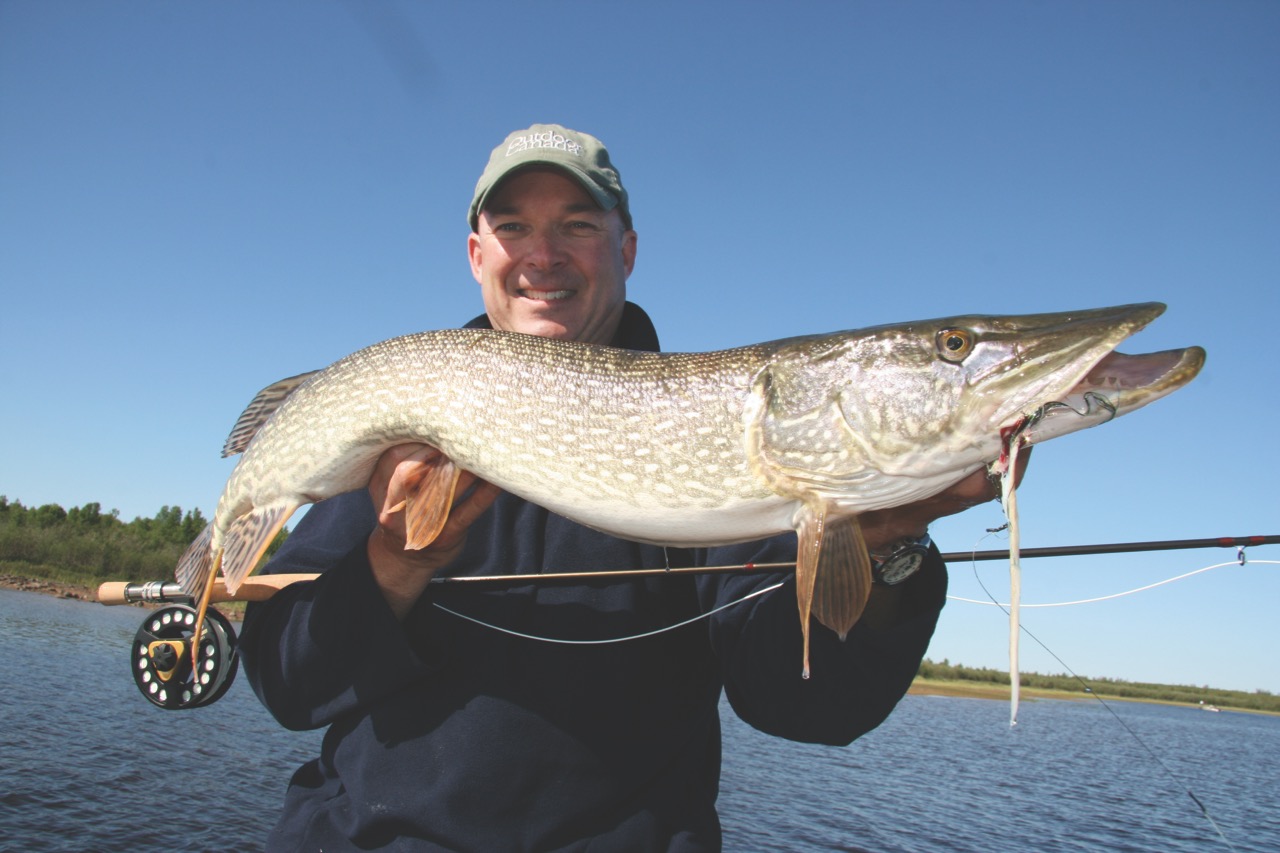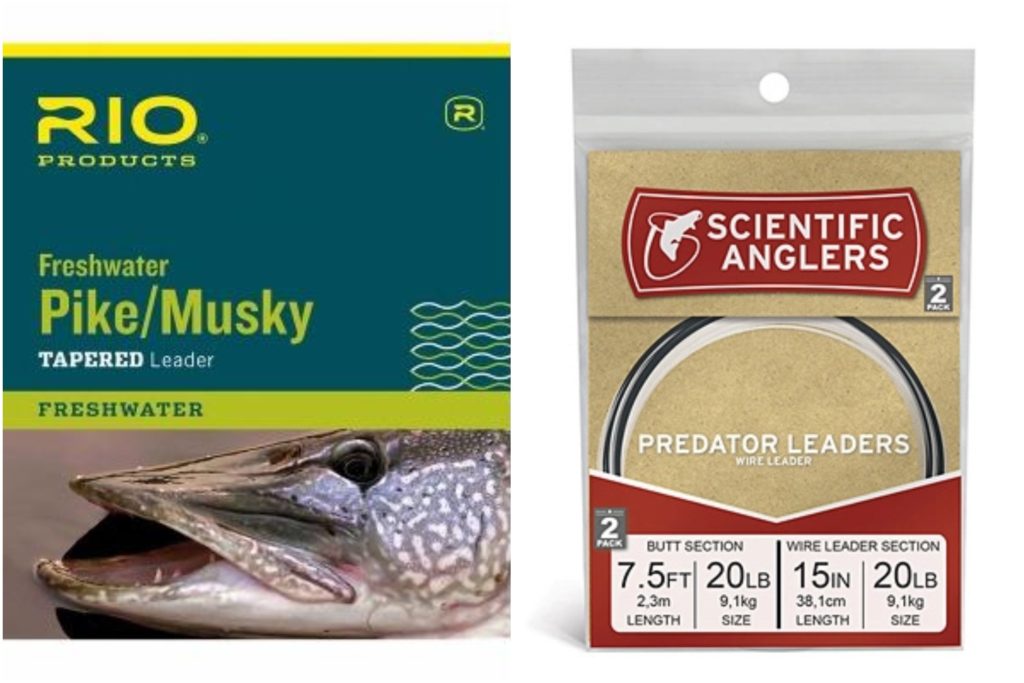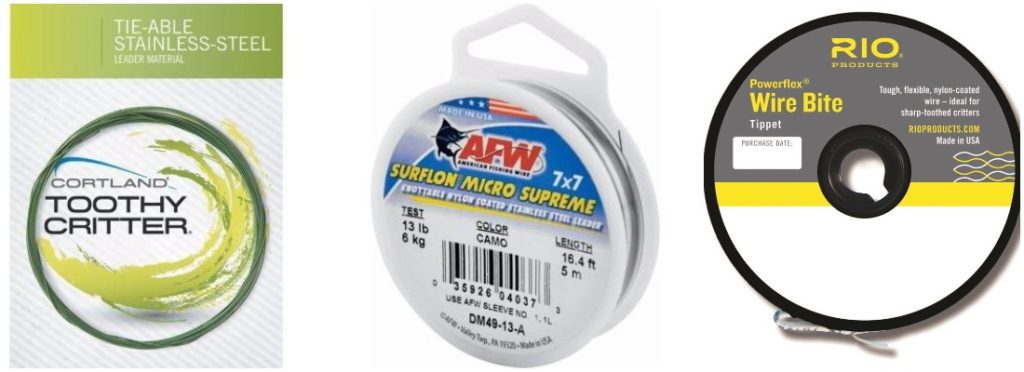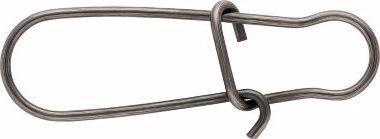PIKE PROTECTION
When you’re tackling toothy critters, tough wire tippets are crucial
Advertisement
In many ways, we are in a golden age of fly fishing for northern pike. For those of us who’ve had the thrill of landing these gators on a fly rod, it’s hard to believe fly purists once looked down on northerns as unworthy of pursuit. But as the pike’s reputation was rehabilitated, tackle companies took note and started creating specialty gear for delivering big flies to these cool-water predators. And the most dramatic improvements have been in leaders.
Fly fishing for the toothiest gamefish in Canadian waters requires a bite tippet—a stretch of tough material at the end of the leader to prevent bite-offs. Before recent innovations, however, they usually weren’t commercially available, and creating one was often vexing. You had to track down 60- or 80-pound mono or some kind of thin, strong wire, then use complex specialty knots or twist the wire strands together and melt the plastic coating. In short, you had to really want to fly fish for pike. Today, however, most tackle shops sell pre-made pike and muskie leaders with bite tippets, as well as the proper materials to make your own.
Advertisement
Pre-made Leaders
For those not inclined to fuss with making their own pike leaders, there are some excellent commercially available options. I’ve used both Rio Products’ Pike/Musky and Toothy Critter Leaders and Scientific Anglers’ Predator Leader (above), and they worked perfectly. They have six to eight feet of tapered mono, with 12 inches of nylon-coated steel wire factory-knotted to the end. Some have wire crimps to attach the fly, while the others have either a small snap or flexible wire for tying.
There are a couple of drawbacks to such leaders, however. For one, they cost about $10 apiece. And suppose you use up your supply of leaders during a fishing trip? I’ve never had one break, but I’ve lost them on snags. With that in mind, it’s handy to be able to make your own.
Advertisement
DIY Leaders
The key to making your own pike leaders is tieable wire. Strong and thin, this plastic-coasted wire is supple enough that you can tie standard fishing knots with it. I’ve used most of the tieable wires commercially available, including Cortland’s Toothy Critter, AFW’s Surflon Micro Supreme and Rio’s Powerflex Wire Bite Tippet (all above). All are excellent. The wire comes in a variety of sizes, but I mostly use 20 pound, which is about as thick and flexible as 10-pound mono. And it costs between $15 and $20 for a 15-foot spool, enough for at least 10 bite tippets.
Advertisement
My standard pike leader is four to six feet of monofilament—between 15- and 30-pound test, depending on the size of my quarry and flies. With a sinking line, I shorten the leader to about three feet. Then I use a double surgeon’s knot to tie on about a foot of wire, to which I tie on a small, high-quality snap, using a uni-knot or a clinch knot. Tapering from heavier to lighter mono is not required, plus extra knots offer just another place for a leader to fail. And I have seen various other types of pike leaders fail under pressure, but after 10 years of seriously targeting pike on the fly, I have never had one of my simple DIY set-up break.
Snap to It
I usually use a small snap (above) instead of tying the fly directly to the wire because I’m indolent and cheap. Although tying knots with soft wire is a breeze, changing flies with a snap is even faster. Plus, every time you snip off a fly and retie, you lose a few inches of wire. I also think big streamer flies move a lot better in the water when not tied on directly. Just be sure to use a top-quality snap, rated for the size of fish you’re after. And if you insist on tying your fly directly to the tippet, use a loop knot (see “In the loop” below).
Here’s another interesting thing about plastic-coated tieable wire: as toothy critters chomp ’em, some of the coating gets scraped away, causing the wire to pigtail at the end. You’ll eventually have to retie, but don’t be in a rush. The resulting springiness gives the fly an unpredictable wobble at the beginning and end of each strip. And sometimes, that’s just what it takes to turn on the predatory instincts of a lazy spring pike.
Scott Gardner is Outdoor Canada’s associate editor and fly-fishing columnist.
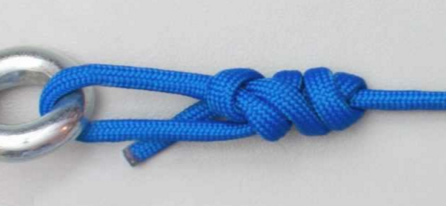
Bonus tip: In the loop
If you tie a uni-knot but don’t snug it down to the hook eye, you get a passable loop. A struggling fish will usually close it, however, so you’ll have to retie afterwards. That’s why my favourite loop knot for attaching a fly is the non-slip mono loop (above). It’s easy to tie and works perfectly with tieable wire.

